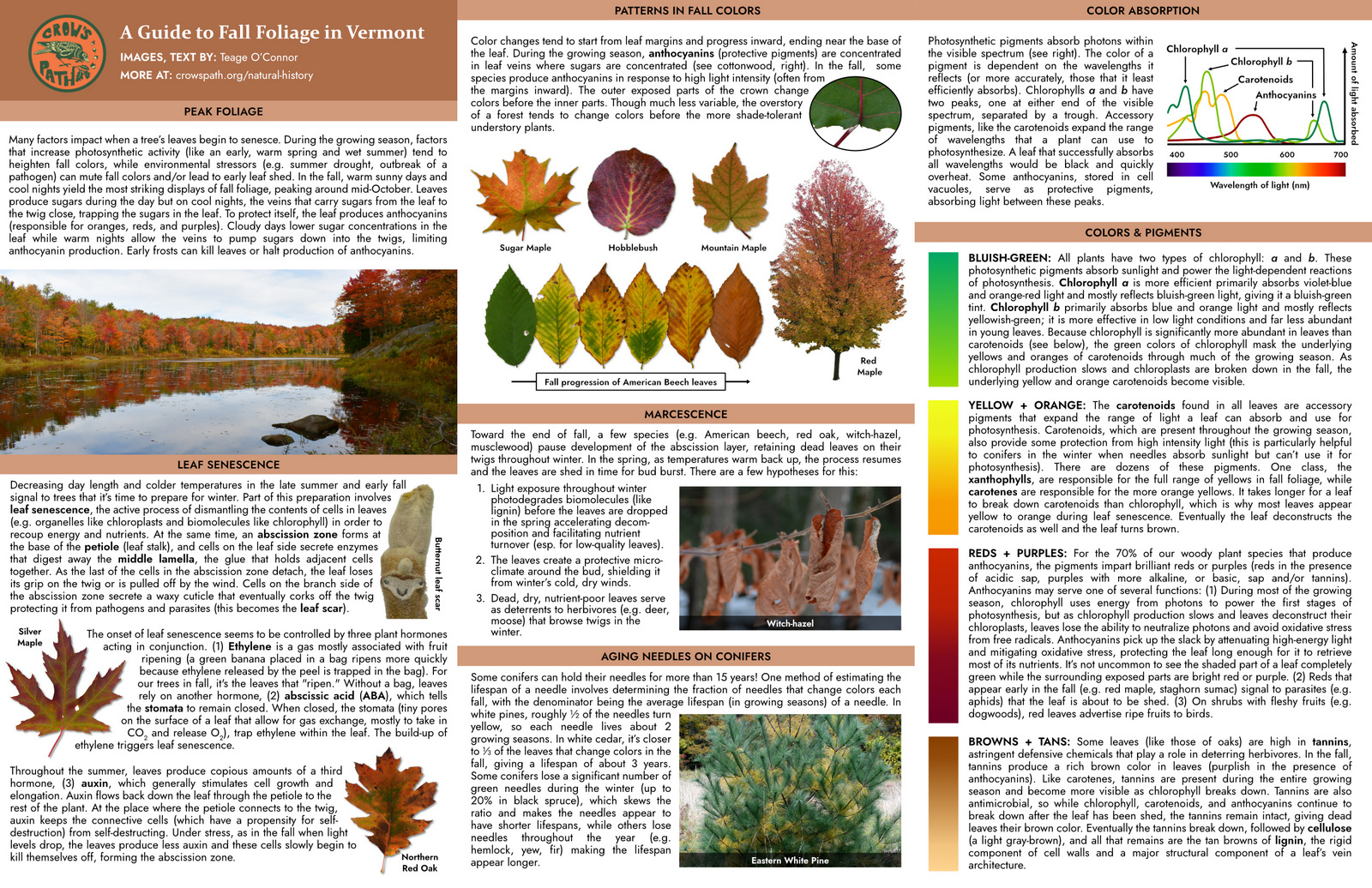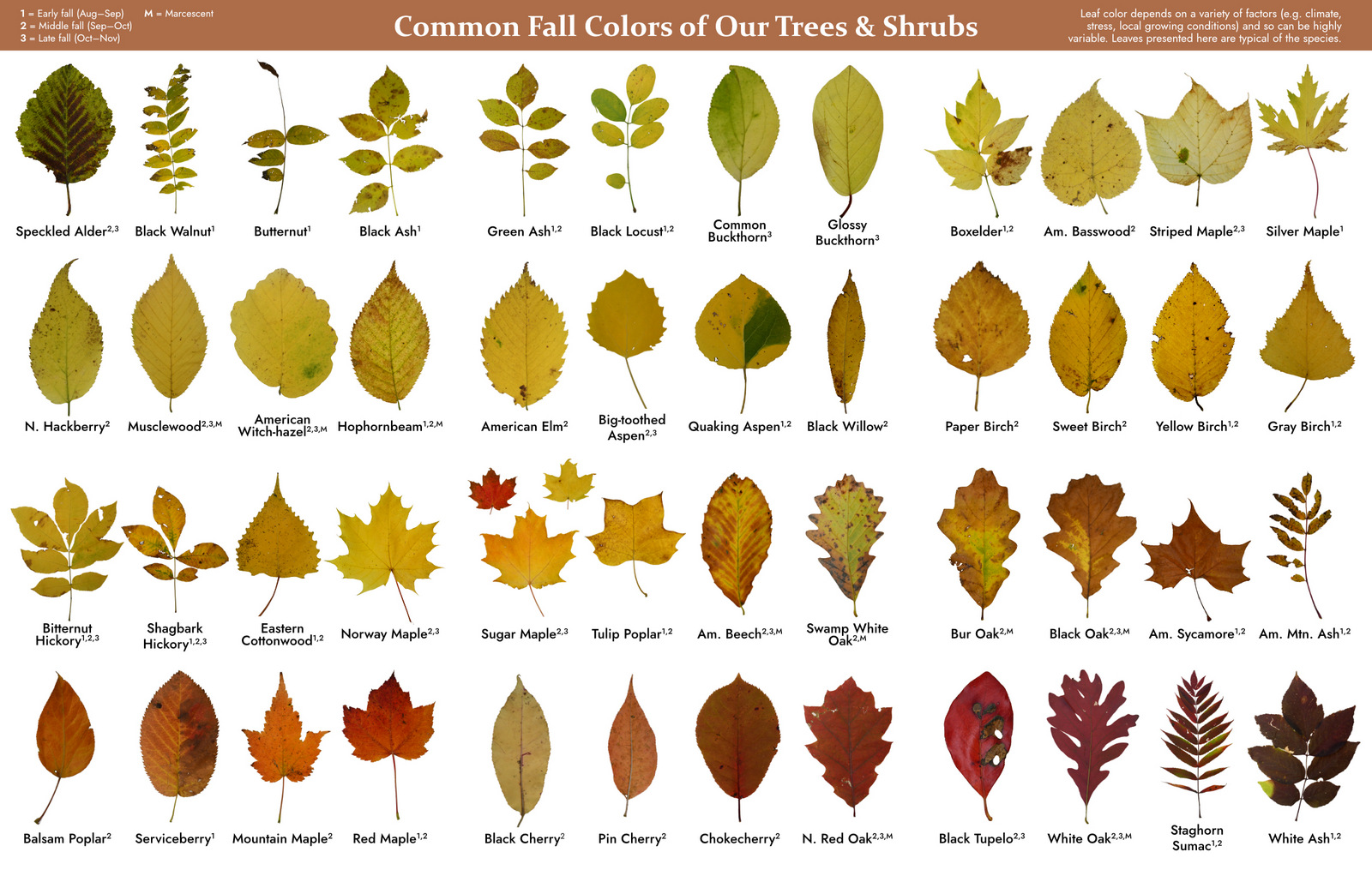Fall is most certainly a magical time of year in the northeast. But have you wondered why we have white ash has purple leaves, sugar maple has orange leaves, and witch hazel has yellow leaves? And what conditions make for a peak foliage year? This guide details why leaves change color, how they change color, and the adaptive reasons behind the different colors. It is the perfect companion for leaf peepers of all skill levels.
Field tested, naturalist approved. Our spiffy guide to the leaves of Vermont trees is printed on locally on waterproof, tearproof paper. This lightweight, durable guide is built specifically for helping you identify trees out into the field in all conditions. Guides are $15 each (we accept cash, check, PayPal, and Venmo). You can order a copy here.
Small version (~9mb)


